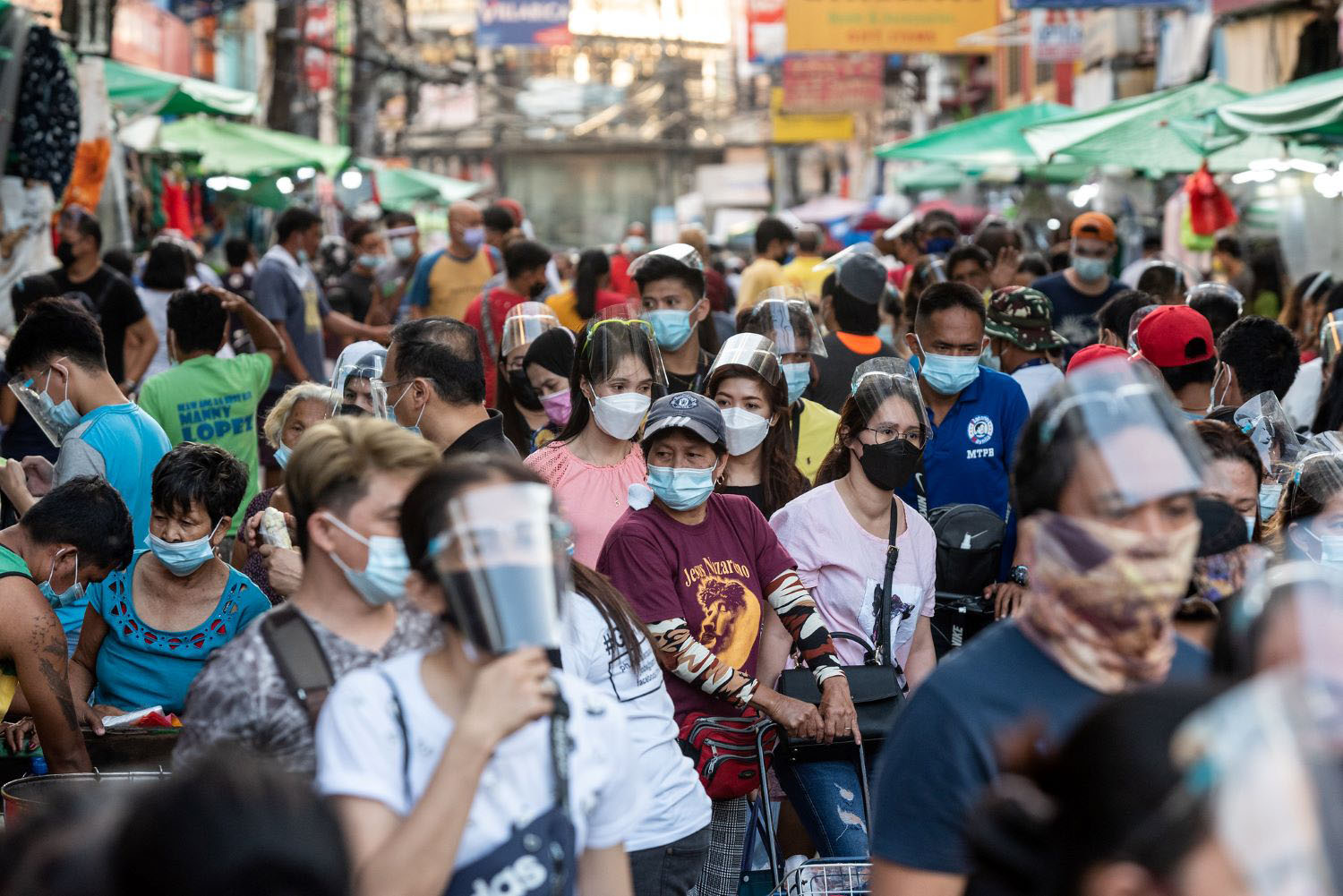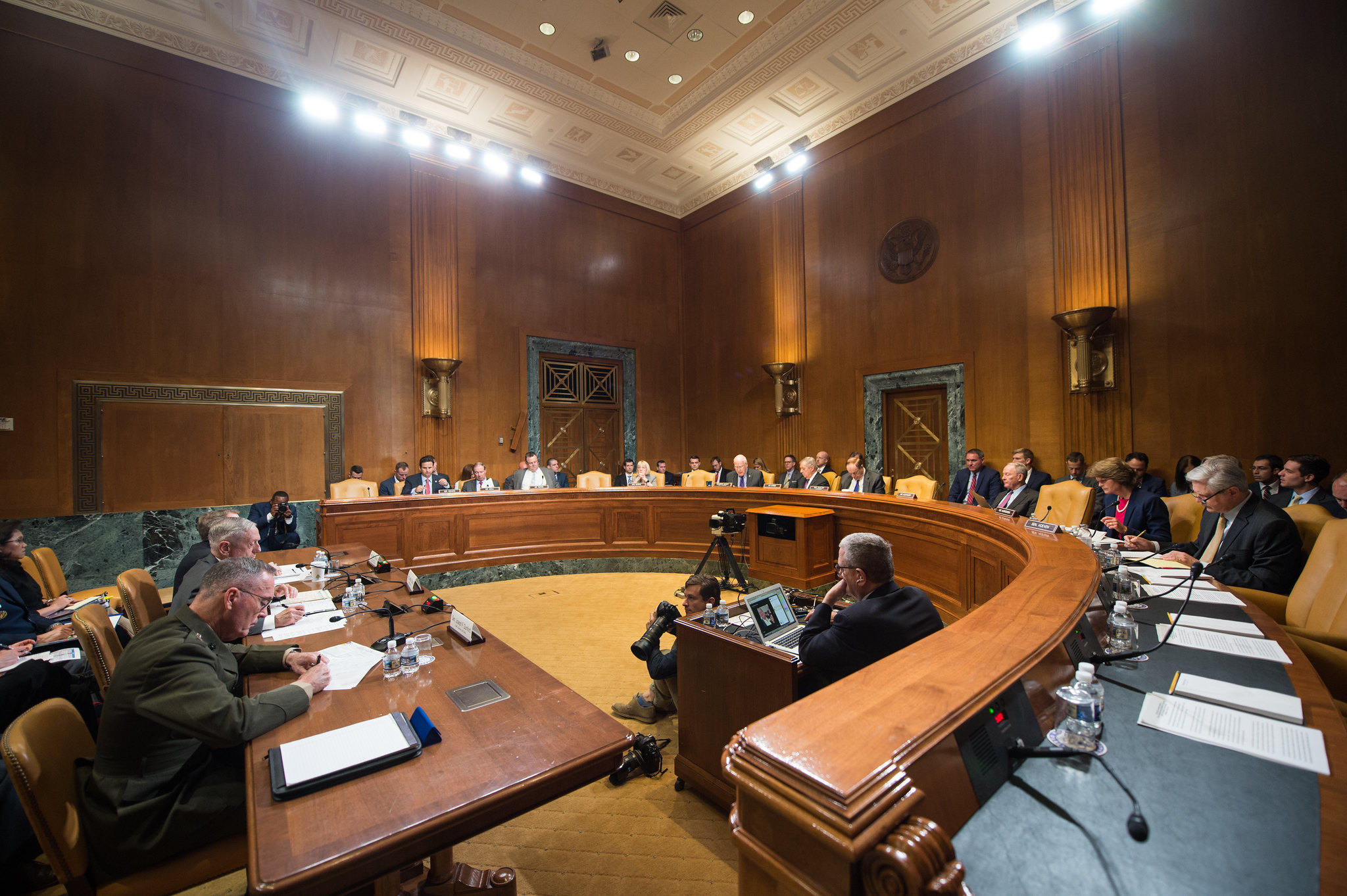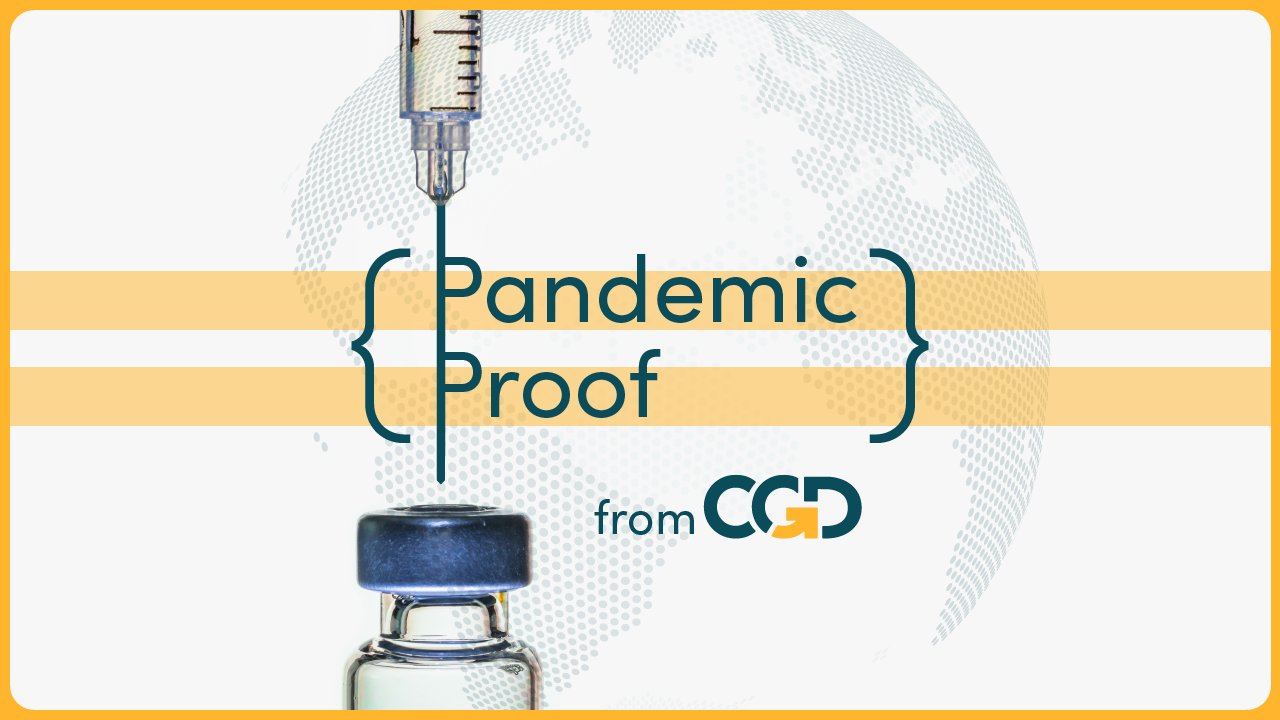Recommended

Blog Post
This week is World Antimicrobial Awareness Week, a global campaign initiated by the World Health Organization (WHO) to improve awareness and understanding of antimicrobial resistance (AMR). AMR is a major public health threat. According to the WHO, it’s one of the top 10 health threats facing humanity, yet despite this, public awareness of AMR remains low. The average person on the street could probably tell you something about HIV or malaria, but only 44 percent of people have heard of antimicrobial resistance, despite it being responsible for more deaths than HIV and malaria combined.
There is vast misunderstanding about AMR: 63 percent of people feel they are not at risk of an antibiotic resistant infection if they take antibiotics correctly. This lack of public concern has translated into little political action. Fewer than one quarter of countries have adequately financed and implemented their national AMR action plans. Most countries have failed to enact either push or pull incentives—schemes designed to increase antimicrobial innovation by decreasing R&D costs and increasing market returns, respectively. Given this bleak reality, it is important to consider the portrayal of AMR in the media to determine how this might affect public consciousness and tangible action to tackle AMR. By analysing the media portrayal of AMR, we can identify areas of momentum to build upon, and areas in need of highlighting.
What does the media say about AMR?
After searching the media monitoring platform Meltwater for coverage of AMR, using a set of key terms related to antimicrobials, resistance, incentives, and organisations working in this space, we found four key trends. (See annex for further details on our methodology.)
1. Coverage of AMR in the media is increasing
Coverage of AMR seems to increase relatively linearly from 2009, save for a drop from 2019 to 2020. This drop from 2019 to 2020 is interesting, as we would have expected the COVID-19 pandemic to have increased interest in infectious disease and health security, rather than to have displaced attention. However, we have to be careful when drawing conclusions about interest in AMR over time. The 2009 starting point may just reflect the advent of social media and mass electronic media rather than an interest in AMR specifically.
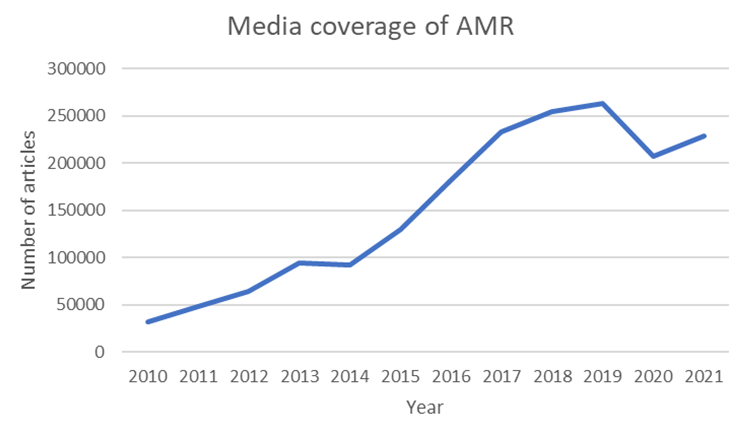
2. Coverage mainly focuses on access rather than innovation or stewardship
There are three crucial components to the AMR issue: access to antimicrobials for all those who need it, stewardship of the drugs, and innovation to develop new ones. In our previous work, we found that apart from shared concern for stewardship, different countries have distinct priorities in addressing AMR. While those in higher-income countries mainly focus on ensuring innovation for new drugs, those in lower-income countries are most concerned about access to antimicrobials.
Interestingly, in our media analysis we did not see a clear divergence of priorities between regions. Instead, by far the greatest focus for all countries was access—covered over 10 times more frequently than innovation, which itself received twice the attention of stewardship.
3. R&D incentives for AMR are increasingly discussed
Coverage of both push and pull incentives has increased over time, but some key differences are worth highlighting. We found that most coverage of incentives was in Switzerland rather than in North America where coverage of AMR is greatest. Coverage of pull incentives was consistently greater than coverage of push incentives, with the former experiencing an earlier bump in coverage (from 2015 to 2017). This might be linked to the publication of the UK’s Independent Review on AMR and the UN General Assembly declaration on AMR in 2016, which both highlighted the need for pull incentives. Coverage of pull incentives then plateaued, until jumping again in 2020. This is when coverage of push incentives also jumped, likely due to the impact of COVID-19 and the according interest in incentives for research and development of novel medicines.
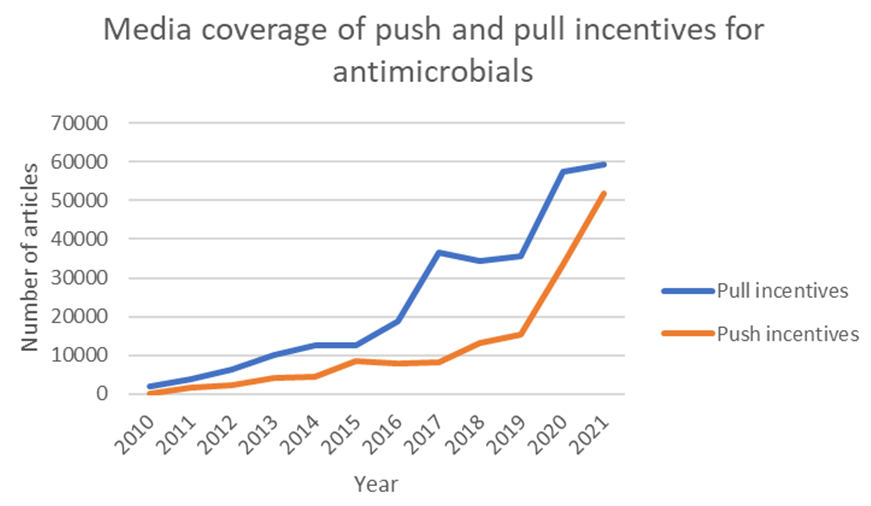
The most discussed incentives were subscription models, tax credits, and grants—which matches closely with what we found in our previous work. The coverage of subscription models fits with our expectations, given that this is one of the few models currently enacted: England and Sweden are both currently testing pilots of this model, and legislation to establish a similar scheme (the PASTEUR Act) is under debate in the US. Similarly, grants have been used for many years to try to stimulate antimicrobial research and development. The organisations GARDP, CARB-X, the AMR Action Fund, and DRIVE-AB also received significant coverage globally. This was unsurprising, given their role as important stakeholders in the global response to AMR—including through grant making.
4. Incentives differ in popularity by time and by region
The popularity of different incentives varied over time: these changes aligned with coverage trends in the scientific literature we previously reviewed: while market entry rewards were initially popular in English-language media, with coverage peaking in 2017, subscription models then became the dominant models, with coverage dramatically rising through to 2021. This uptick coincides with the advent of England’s National Health Service subscription pilot.
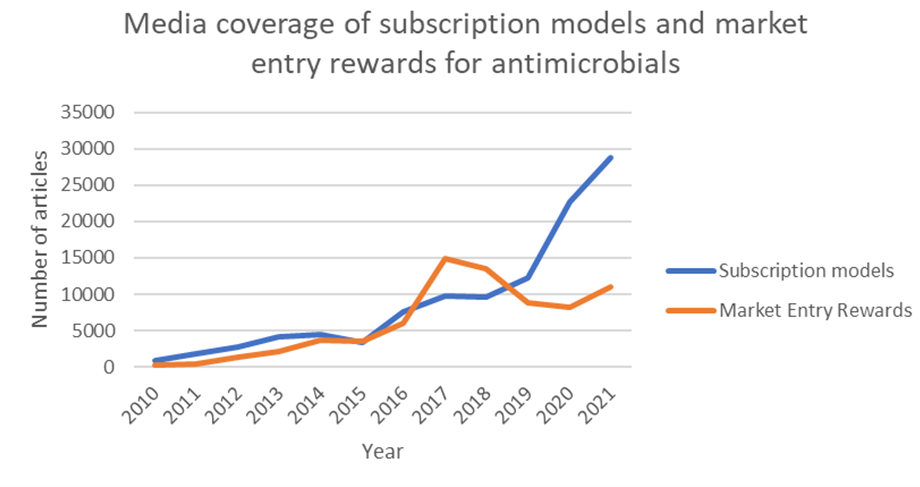
There were also interesting differences in coverage of different incentives in different regions. For example, market entry rewards were a frequent topic of discussion in English-language media but did not appear frequently in other languages. The diagnosis confirmation model (a dual pricing system where new antimicrobials are only reimbursed at a higher price when a patient’s diagnosis is confirmed) was commonly discussed in Spanish-language media, especially in South American outlets, but did not appear in other languages.
A window of opportunity to raise awareness
We are currently at a pivotal moment in the fight against AMR as we lead up to the 2024 UN General Assembly High-Level Meeting on AMR. This meeting provides an important opportunity to enact much-needed policies to tackle AMR. By galvanising public interest in this topic, we can ensure the global community does not let this chance slip by. However, there’s still more to do if we want to raise AMR in the public consciousness. A recent consultation by the Quadripartite Joint Secretariat on AMR recommended that awareness-raising must happen collaboratively and collectively across human, plant, animal, and environmental sectors. Children and youth were seen as the top priority audience, followed by media, parliamentarians, and policy makers. We must use the momentum from COVID-19 to highlight the importance of pandemic prevention, especially as it relates to AMR. Increasing awareness of the threat of AMR will be a crucial first step to driving action.
Annex available here
Disclaimer
CGD blog posts reflect the views of the authors, drawing on prior research and experience in their areas of expertise. CGD is a nonpartisan, independent organization and does not take institutional positions.




